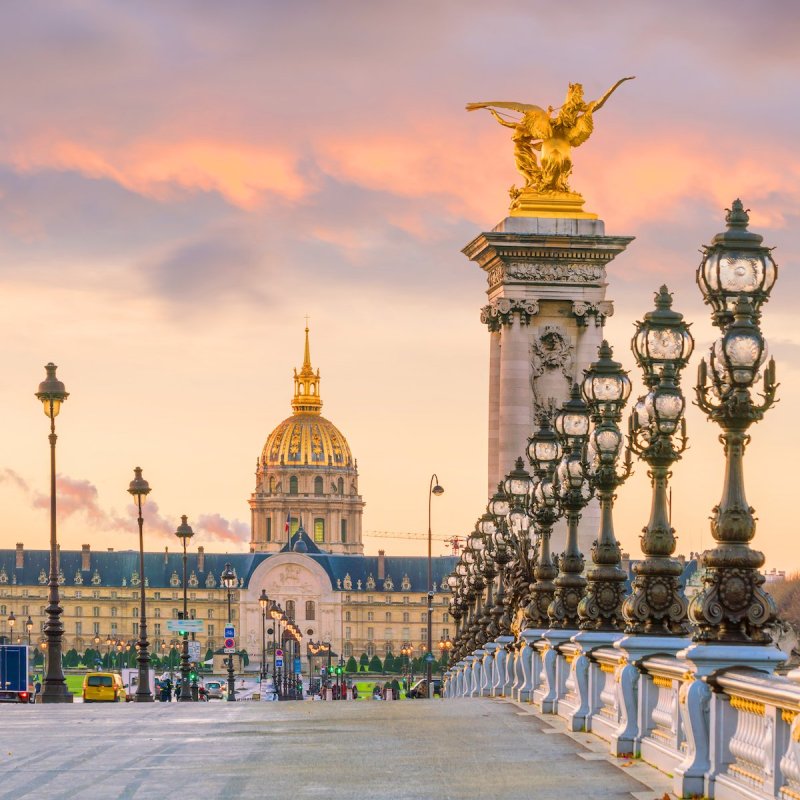
As wonderful as traveling abroad and experiencing different cultures and customs is, there are social protocols in each country that visitors may be unfamiliar with. Although you can be polite and well-meaning, there will be mistakes that you make that you are unaware of, deeming you a tourist in the eyes of the locals.
Videos by TravelAwaits
I am an American who’s lived in Paris since 2005, and it’s taken me many years to absorb the particular culture and sometimes subtle social customs of the French. Even though I adhere to them as closely as I can, there are still times I don’t get it right. Luckily for you, this is a crash course in how to avoid looking like a tourist here, and hopefully these guidelines will serve you well so that you can interact with the locals in a positive way.
1. Always Say Bonjour, No Matter What
This simple rule is probably the most crucial when you visit France. If you follow it, you will be pleasantly surprised what it can do. Always greet someone with Bonjour when you go into a shop, restaurant, cafe, hotel, or any public service place. Even if you walk into a shop and walk right out or want to ask a simple question, Bonjour will break the ice, and put the other person at ease. I am from New York City originally, and as a New Yorker, I am always very direct with people. When I first moved here, I would ask direct questions to shop owners, bank tellers, et cetera, and they would correct me by saying Bonjour in a stern manner. Once I excused myself and apologized, and then started over by saying Bonjour, they would be much more agreeable and answer my question politely.
2. Don’t Assume Everyone Speaks English
Another mistake that tourists frequently make is assuming that everyone speaks English. I am also a tour guide and usually take clients to a cafe during the tour, and many times, clients will order in English, not thinking that the waitperson may not speak English. What would be more respectful would be to ask, “ Do you speak English?” in English, or in French, “ Parlez vous anglais?” If they don’t speak English, they will call another wait staff person or manager to ask them.

Restaurants, Cafes, And Bars
Since you will most likely be spending a good deal of your time at restaurants, cafes, and bars, here are some useful tips for smoother sailing and to make your experience more enjoyable.
4. Seating
Pretty much the rule of thumb is at cafes, you don’t have to wait for someone to seat you. If you see an empty table, just take it, preferably if it’s been cleaned. In a regular restaurant or bistro, you should wait for the host to seat you.
5. Patience
Cafes and restaurants in France have far fewer staff than they do in the U.S. A typical cafe or small restaurant will only have two or three servers, and they do everything — take your order, serve you, collect for the bill, and clean and set the tables. It’s common that a waitperson will have to service 10 to 15 tables alone, so, be patient with your server, enjoy the ambiance and the people around you. Also, you should know what you want to order when your server comes to take your order because it may take them a long time to circle back to you. As an ex-New Yorker who was always in a hurry, I had to adjust my patience level quickly.
I do not know the reason, but getting the server to give you a check is another exercise in patience. Again, it’s common to ask for the check two or three times before the server actually brings it.
6. Tipping
Technically your tip is included in your check but is listed as a service charge. However, it’s customary, but not mandatory, to leave a euro or two on the table in coins. There’s no tip box for credit cards, so it must be left in cash. If you go to an upscale restaurant with good service, then up the tip 5 percent to 10 percent. Restaurant employees are paid a full living wage and automatically get health care, so don’t feel guilty if you don’t leave anything at all — it’s perfectly acceptable. Over-tipping is a dead giveaway you are a tourist.
7. Ordering Coffee
Unlike Starbucks and coffee bars, which have a long menu of coffee choices and will also customize your order, in France, cafes serve coffee just four ways.
- Cafe au lait or cafe creme: coffee with hot steamed milk
- Cafe: one shot of espresso
- Cafe noisette: espresso with a bit of milk foam on top (similar to macchiato)
- Cafe Americano: espresso with hot water, similar to American coffee
These are the four standard choices at French cafes (and they’re also available decaffeinated). Don’t ask the server for soy or oat milk, half chai lattes, or half-decaf, half-regular. They will look at you like you are from outer space.
Editor’s Note: When you’re ready to caffeinate, consider Richard’s picks for the 9 Best Cafes To Experience In Paris.

8. Food Allergies, Gluten Free, Food Substitutions, Et Cetera
Although they are changing with the times, the French have not caught up with the demand for allergy-free menus and gluten-free foods, but there are a number of places where they are available. As far as food allergies go, most servers will not know the complete ingredients of the food on the menu and will ask the chef. However, if you have life-threatening allergies, like to nuts, it may be better to eat at an organic or vegan restaurant, or a place where everything is made in-house and the head chef is present.
Unfortunately, almost all pastries and breads at the boulangeries/bakeries have gluten in them, but there are a few exceptions, mainly the famous macarons, which have no flour in them, plus there are a number of gluten-free bakeries that make excellent French pastries and breads where you can hardly tell the difference. (Trust me on this one, I am a former baker and have personally tried some of the gluten-free products at these bakeries).
It’s okay to ask for something to be left out of a dish when ordering, for example, no anchovies in the Cesar salad, but don’t ask for substitutions. For example, don’t ask to replace the fries in the steak frites with a salad. Just order a side salad on the side.
Editor’s Note: For more Parisian foodie inspiration, consider the 7 Best Paris Restaurants With Three-Course Lunches Under $30, 9 Classic French Dishes And Where To Enjoy Them In Paris, the 11 Tastiest Ice Cream Shops In Paris, and (even if you can’t make it to France) 8 Fantastic French Food Gifts Perfect For A Gourmet.

9. Dress For Success
Paris was the first capital of fashion and continues to have an international influence on fashion.
You don’t have to wear haute couture or designer clothes, and for sure not a beret, to fit in with the locals. Most Parisians dress in a relaxed style, wearing casual clothing that’s neat and coordinated.
For women, skirts and dresses are more popular, but jeans and pants are still prevalent, and tights are worn instead of leggings.
Dress shorts with T-shirts are acceptable to wear in the summer, but believe it or not, that’s only been a trend in the last 10 years.
Men wear dress pants, khakis, and jeans but dress them up with sports jackets and wear leather, hard-soled shoes.
Scarves for men and women are a standard accessory and are worn all year round. The French are also known to have a unique way of tying their scarves, so bring or buy a scarf, and you will fit right in. There are YouTube videos on how to tie scarves.
A big no-no is wearing baggy sweatpants with big T-shirts or very short running shorts and oversized sports jerseys. The only time you see Parisians wear workout clothes is when they are actually working out.
